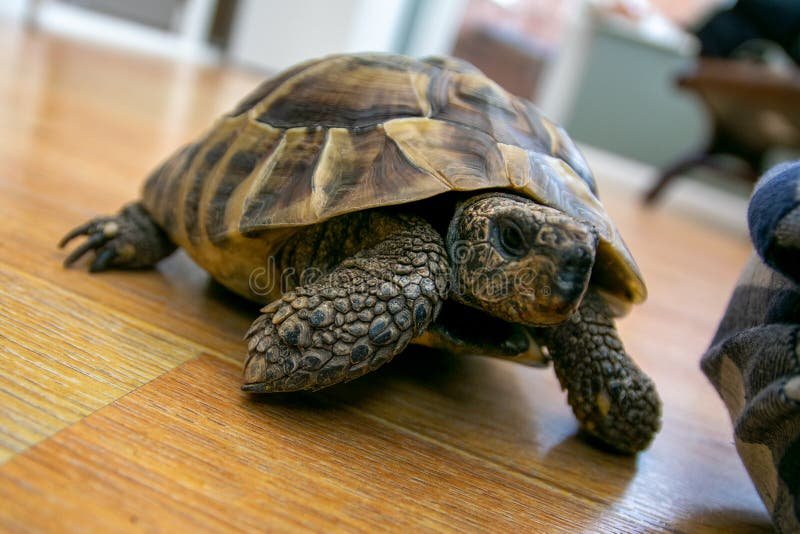
The Hermann’s tortoise comes in two subspecies primarily: the Western Hermann’s tortoise and the Eastern Hermann’s tortoise. They’re not just different in appearance; they also have unique personalities. Some tortoise owners swear by how interactive and engaging these animals can be. It’s almost like having a little living piece of nature in your home, but it’s important to understand how to nurture this connection, especially if you have other pets around. So, let’s unpack the interactions between Hermann’s tortoises, humans, and other household pets, and see what makes them tick.
Do Hermann’s Tortoises Like Human Interaction?
You might be wondering, “Can a tortoise really be friendly?” The answer is yes, but with some caveats. Hermann’s tortoises can develop a bond with their human caregivers, but it typically requires patience and time. These creatures are not like dogs, eager for affection and play. Instead, they may gradually become accustomed to your presence, especially if you handle them gently and frequently.
To encourage a friendly relationship, it’s essential to create a comfortable environment. Ensure their habitat has plenty of hiding spots and that they feel secure. When you first start handling your tortoise, try to keep sessions short. Place your hand on the ground and let them come to you. Over time, they’ll recognize you as a source of safety rather than a potential threat. You might find they even start to associate you with food, which can be a great icebreaker!
How Do Hermann’s Tortoises Behave Around Other Pets?
Introducing a Hermann’s tortoise to other pets can be a bit of a juggling act. You’ll want to think about the personalities of everyone involved. For instance, if you have a curious dog, they might see the tortoise as an intriguing new toy. On the flip side, cats are often more indifferent, sometimes even ignoring the tortoise altogether.
However, it’s crucial to supervise any interactions. While a Hermann’s tortoise is generally calm, their shell is their armor, and they might retreat into it if threatened. Some dogs may become overly excited or even aggressive, which can be distressing for the tortoise. Always start with short, controlled introductions. Keep the tortoise in a secure area and allow your other pets to observe from a distance. Gradually, you can give them more freedom as they get used to each other’s presence.
Creating a Safe Environment for Your Tortoise
Safety is a priority when introducing a Hermann’s tortoise to your home. Ensure that your home is a safe haven by removing potential hazards. Tortoises are curious creatures, and they can easily wander into trouble if you’re not careful. Here are some tips to keep in mind:
- Secure the Habitat: Make sure your tortoise’s enclosure is escape-proof. Tortoises are known for their ability to burrow, so a secure bottom is crucial.
- Monitor Interactions: Always supervise any time your tortoise is out of its enclosure, especially around other pets. This way, you can intervene if things get too rowdy.
- Provide Hiding Spots: Tortoises need places to retreat when they feel stressed. Adding rocks, plants, or small shelters can help create a more comfortable space.
By ensuring a safe environment, you’re helping foster a more relaxed atmosphere for your tortoise, allowing for more positive interactions.
Understanding Hermann’s Tortoise Temperament
Hermann’s tortoises can be surprisingly social for reptiles. While they may not jump into your lap like a dog or purr like a cat, they often show curiosity and can even recognize their owners. These tortoises are typically gentle and calm. If they feel threatened, their first instincts will be to withdraw into their shell rather than lash out.
Knowing their temperament helps set realistic expectations. You might not get the same affection you’d expect from a furry pet, but there’s something special about watching a tortoise explore its surroundings. One of the charming things about them is how they often take their time, reminding us to slow down and appreciate the little moments in life.
Feeding and Bonding with Your Tortoise
Feeding is one of the most enjoyable ways to bond with your Hermann’s tortoise. They typically consume a diet of leafy greens, flowers, and some fruits. It’s vital to provide a well-balanced diet for their health and happiness. Interestingly, they can learn to associate you with food, which strengthens your bond.
Consider making feeding time a mini-event. You can gently call their name or make a soft sound when offering food. Over time, they might start to come to you when it’s mealtime, looking forward to your interactions. Just remember to keep their diet varied and avoid giving them too many high-sugar fruits or starchy vegetables.
Common Concerns: What to Watch Out For
Like any pet, owning a Hermann’s tortoise comes with its own set of challenges. You might notice some behaviors that raise questions. For example, if your tortoise seems less active than usual, it could indicate health issues. Here are a few signs to watch for:
- Refusal to Eat: If your tortoise suddenly stops eating, it’s time for a vet visit.
- Staying in Its Shell: While this is normal sometimes, if it lasts too long, there may be an underlying problem.
- Changes in Behavior: If your tortoise becomes aggressive or withdrawn, it might be stressed by its environment or other pets.
If any of these signs appear, consult a veterinarian who specializes in reptiles. A proactive approach will help keep your tortoise healthy and happy.
The Joy of Having a Hermann’s Tortoise
In conclusion, having a Hermann’s tortoise can be a delightful experience. They may not be the most interactive pets, but they offer a unique companionship filled with quiet moments of joy. With patience, proper care, and the right approach, you can nurture a friendly relationship with your tortoise.
Remember to monitor their interactions with other pets and create a safe, enriching environment for them. As you embark on this journey, know that your Hermann’s tortoise can indeed become a cherished member of your household—one slow step at a time.

